The Many Colours of LGBTQ+ Pride
News Story

Every day in February, for LGBTQ+ History Month, on social media we shared some of the flags that represent the different identities in the LGBTQ+ community. Here, we collect them together, as well as speak with artist Guillaume Vandame about his installation, symbols, that celebrates their power.
In 1977, artist and activist, Gilbert Baker, designed the rainbow flag as the original symbol for the LGBTQ+ community. Since then, as our understanding of identity has expanded, many more flags have been created to represent the diversity of the community. Not only do these flags represent the spectrum of sexuality, but gender and desire too.
Though some may consider 28 to be a large number of flags, in reality, there are many more flags celebrating different identities than there are days in one month.

At the Institute we have a selection of flags on display in our library and researchers area – a front facing symbol of our LGBTQ+ collections.
Take a look at the flags and what they represent here, then be sure to read the interview with Guillaume Vandame below, as he discusses his installation, symbols, inspired by his visit to Bishopsgate Institute.
Image gallery
A gallery slider

Gilbert Baker Pride Flag - In San Francisco, 1977, Harvey Milk challenged gay artist and activist Gilbert Baker to create a symbol of the community. Each colour of the rainbow has a meaning: Pink - Sex, Red - Life, Orange - Healing, Yellow - Sunlight, Green - Nature, Turquoise - Magic/Art, Indigo - Serenity, Violet - Spirit. It was first flown at the San Francisco Gay Freedom Day Parade 1978.

Transgender Flag - The Transgender Flag was created in 1999 by trans activist Monica Helms. It made its debut in 2000 at a Pride parade in Phoenix. Light blue and pink feature as the traditional colours associated with boys and girls, respectively. White represents non-binary people of all identities and those who are transitioning.

Genderfluid Flag - In 2012 JJ Poole created the Genderfluid Pride Flag to represent those whose gender identity was fluid and might fluctuate at different times or circumstances. The five different colours represent woman (pink), lack of gender (black), a combination of both woman and man (purple), all genders anywhere on the spectrum (white), and man (blue).

QPOC Pride Flag - The QPOC Pride Flag was created by Tumblr user queerwitchqueenofcolor in 2017. The flag represents the intersection of the queer and POC identities. Since 2020, the use of this flag has become increasingly more popular, as it is often used in solidarity with the BLM movement.
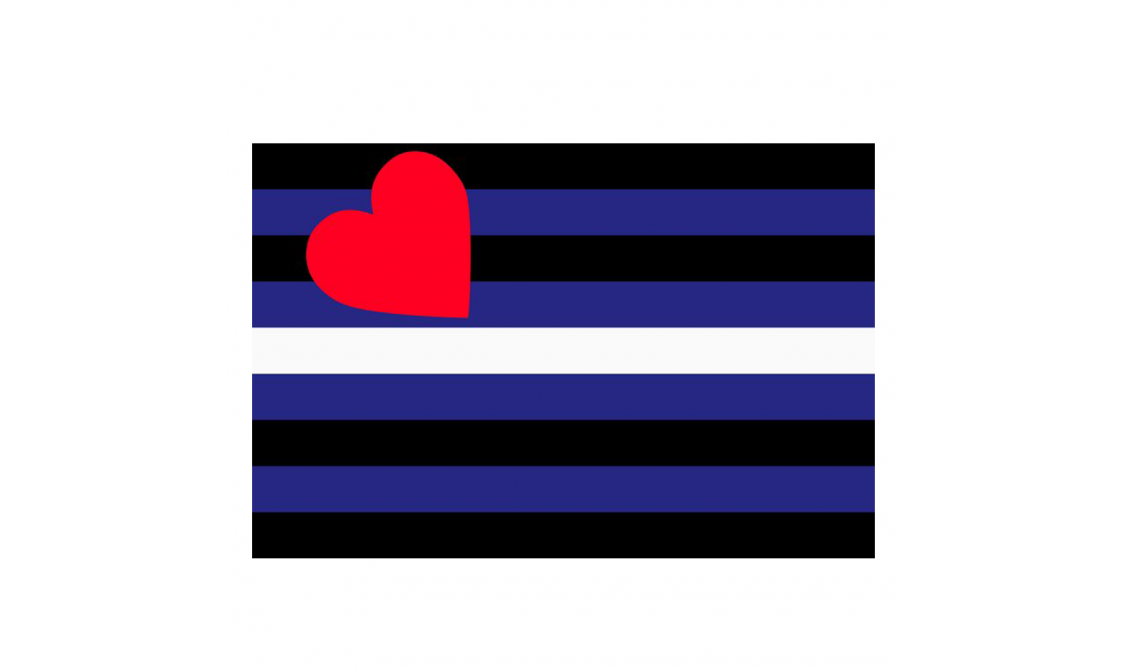
Leather Pride Flag - Designed in 1989 by Tony DeBase for Chicago’s International Mr. Leather (IML) celebration, created to mark the 20th anniversary of the Stonewall Riots. Originally the flag was intended solely for Leathermen, it has since been embraced by many in the fetish and kink community. Regarding the design, DeBase said he wanted to “leave it to the viewer to interpret the colours and symbols.”
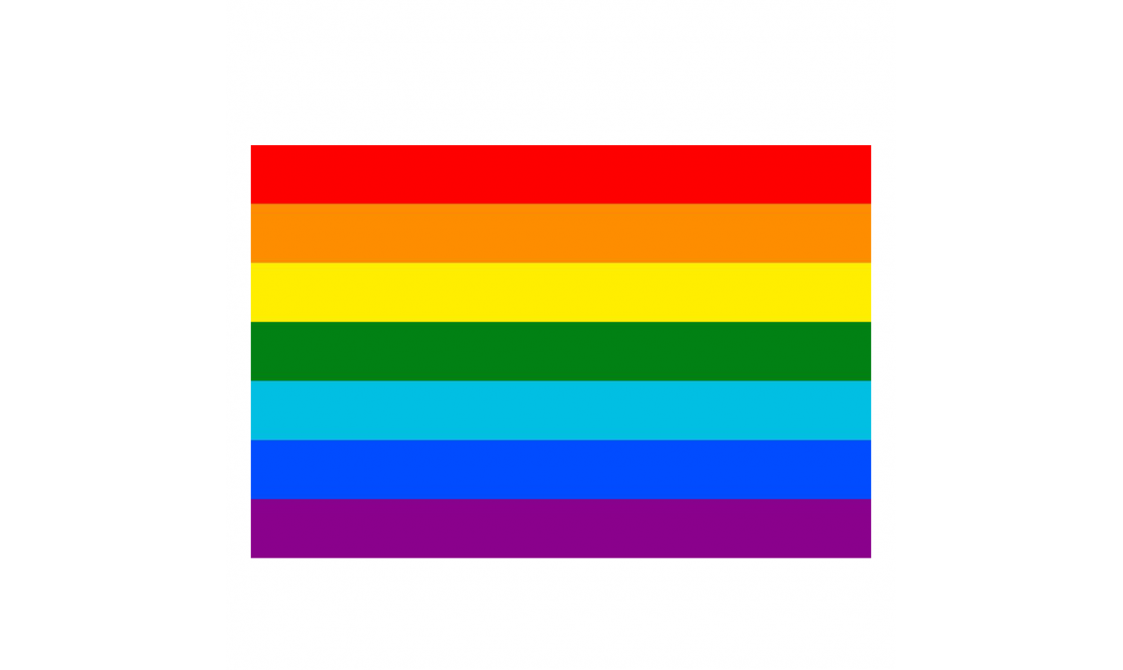
1978 Pride Flag - This version of the flag is the same as the original Gilbert Baker version, except for the removal of the hot pink stripe. The reason for this is that following the murder of Harvey Milk, the demand for the flag greatly increased. Baker and the Paramount Flag Company (who manufactured the flag) found that the hot pink fabric was hard to come by, it therefore ended up being left out.

Intersex Pride Flag - The Intersex Pride Flag was created in 2013 by Morgan Carpenter. It features a purple circle on a yellow background. Carpenter used yellow and purple because these colours are seen as gender-neutral, and the circle represents wholeness and completeness.

Asexual Flag - Asexual people are those who do not have sexual attraction to any gender. The Asexual Flag was designed in 2010 as part of a contest held by Asexual Visibility and Education Network (AVEN). The four colours represent black for asexuality, grey for demisexuality, white for non-asexual partners and allies, and purple for community.

Lesbian Pride Flag - There are different variations of the Lesbian Pride Flag, though this one, created in 2018, has become popular. It's creator, Emily Gwen, tells that the seven shades of pink, white, and orange represent different aspects of being a lesbian. Dark orange for gender non-conformity, orange for independence, light orange for community, white for unique relationships to womanhood, pink for serenity and peace, dusty pink for love and sex, and dark rose for femininity.

Bisexual Flag - LGBTQ+ activist Michael Page created the Bisexual Flag in 1998, in order to increase the visibility of bisexuals. For the design, pink represents attraction to those of the same gender identity, while the blue stands for attraction to people who identify as a different gender. The purple stripe in the middle is a fusion of these colours and symbolises attraction to your own and other genders.

Gay Men’s Pride Flag - This is a modern revamp of an earlier flag that featured a range of blue tones. That version was seen as problematic as it used stereotypical gender binary colours. This updated flag is felt to be more inclusive of a much wider range of gay men, including transgender, intersex, and gender nonconforming men.
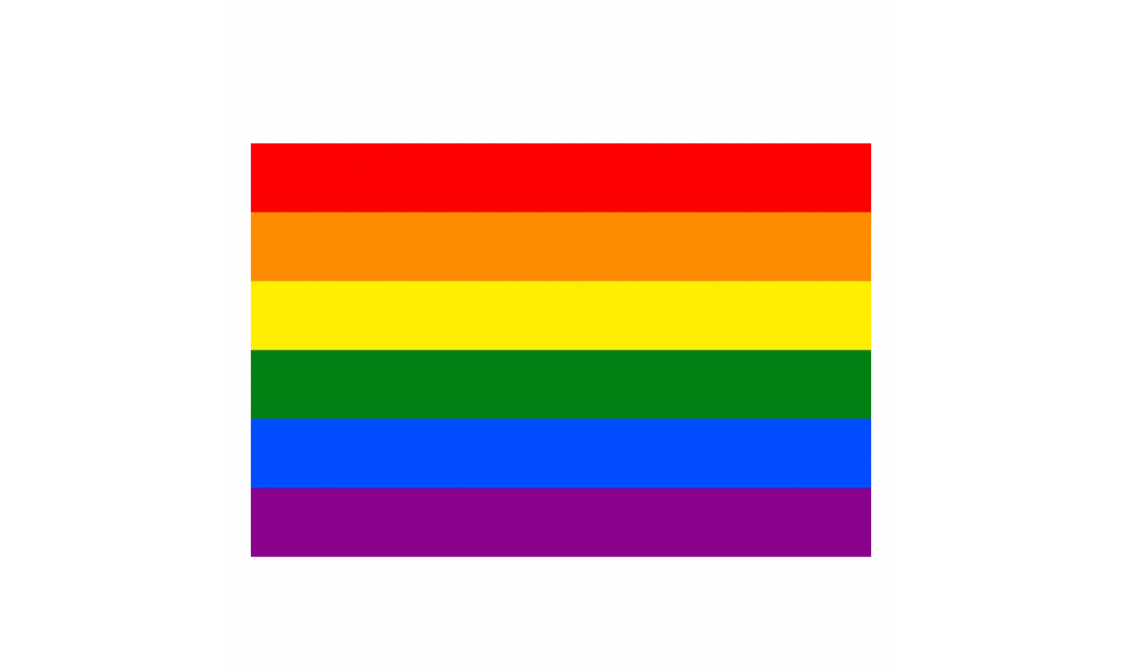
Traditional Pride Flag - In 1979 the LGBTQ rainbow flag evolved into the six striped symbol of queerness that would last for decades. After losing its pink stripe in 1978, the turquoise stripe would depart in 1979. No definitive reason exists for its removal, though it's believed it might have been removed, much like with pink, due to cost.

Bear Brotherhood Flag - The bear flag was designed by Craig Byrnes in 1995 to represent the bear subculture. The colours —dark brown, rust, golden yellow, tan, white, grey, and black—are the colours of bear (animal) fur. Though not necessarily referring to human skin colour or hair colour, the flag was designed with inclusion in mind.

Polyamory Flag - Jim Evans created the Polyamory Flag in 1995. The blue represents openness and honesty in relationships, red for love and passion, and black for solidarity with those who must hide their polyamorous relationships. A yellow pi symbol represents the infinite options for partners available to polyamorous people.

Nonbinary Flag - This Nonbinary flag was created in 2014 to represent people who identify neither as men or women. Yellow for those whose gender falls outside of the binary, white for people with many or all genders, purple for those whose gender identity is a mix or man and woman, and black for people without a gender.

Pansexual Pride Flag - Pansexual people are those attracted to a person regardless of their gender identity. The flag was created in 2010. Pink represents attraction to people who identify as women, the blue stands for attraction to those who identify as men. The yellow stripe represents attraction to those who don’t identify on the gender binary.
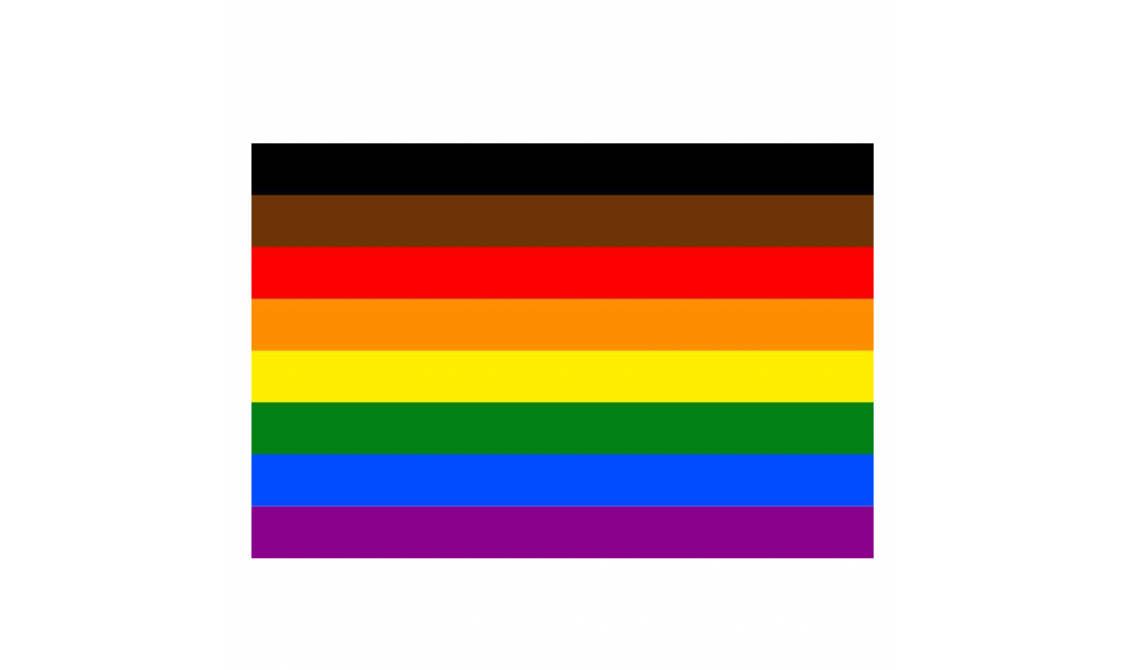
Philadelphia Pride Flag - The Philadelphia Pride Flag was unveiled in 2017 at Philadelphia City Hall. The design added black and brown stripes to the original Pride flag to represent LGBTQ people of colour, who have historically been excluded from aspects of the mainstream gay rights movement.

Aromantic Flag - The Aromantic Flag, designed in 2014, represents people who either do not experience romantic attraction or do so in a non-traditional way. Dark green represents aromanticism, light green for the aromantic spectrum, white for platonic attraction, grey for demiromantic people, and black for the sexuality spectrum.

Rubber Pride Flag - This flag is symbol of the rubber and latex fetish community. Peter Tolos and Scott Moats created the design in 1995. The black colour evokes shiny black rubber, the red symbolises the passion of the community, and yellow highlights rubber play fantasies. The design itself is a literal kink.

Polysexual Flag - Polysexual people are sexually attracted to multiple, but not all, genders. Their flag was designed by Tumblr user Samlin in 2012. The colours and design reference the Bisexual and Pansexual flags, including pink and blue for those who identify as women or men, and green to represent attraction to people who identify outside the gender binary.
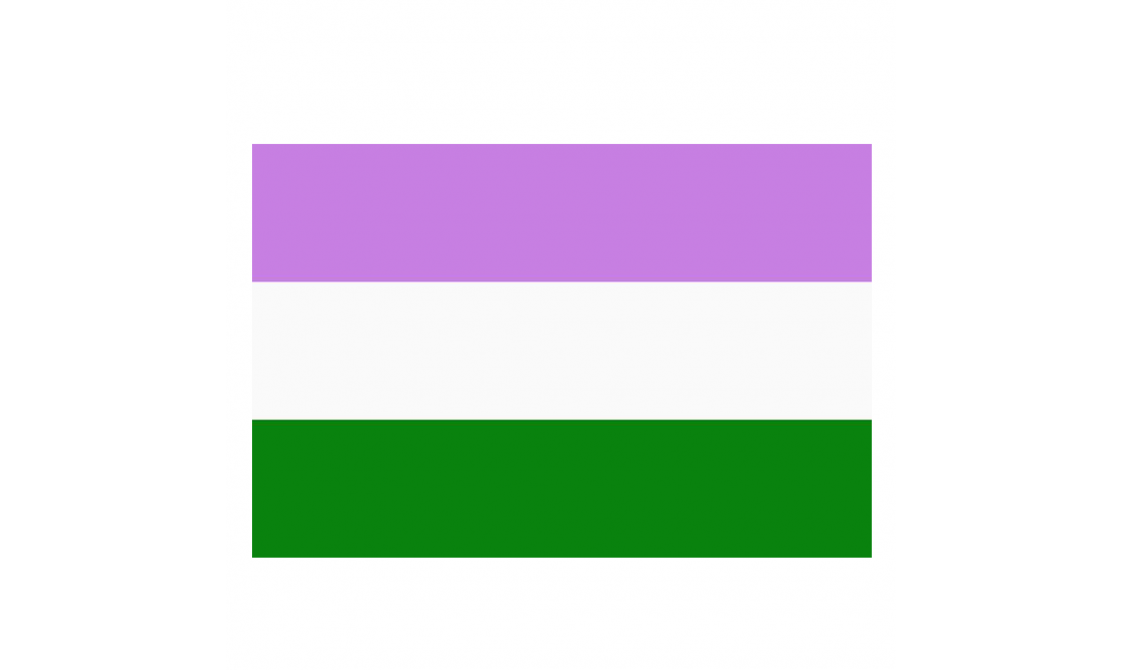
Genderqueer Flag - Writer and activist Marilyn Roxie designed the Genderqueer Flag in 2011. Lavender, the combination of colours that are commonly associated with men and women, blue and pink, represents androgyny and other queer identities. White stands for agender identity. Green represents identities defined outside the binary.
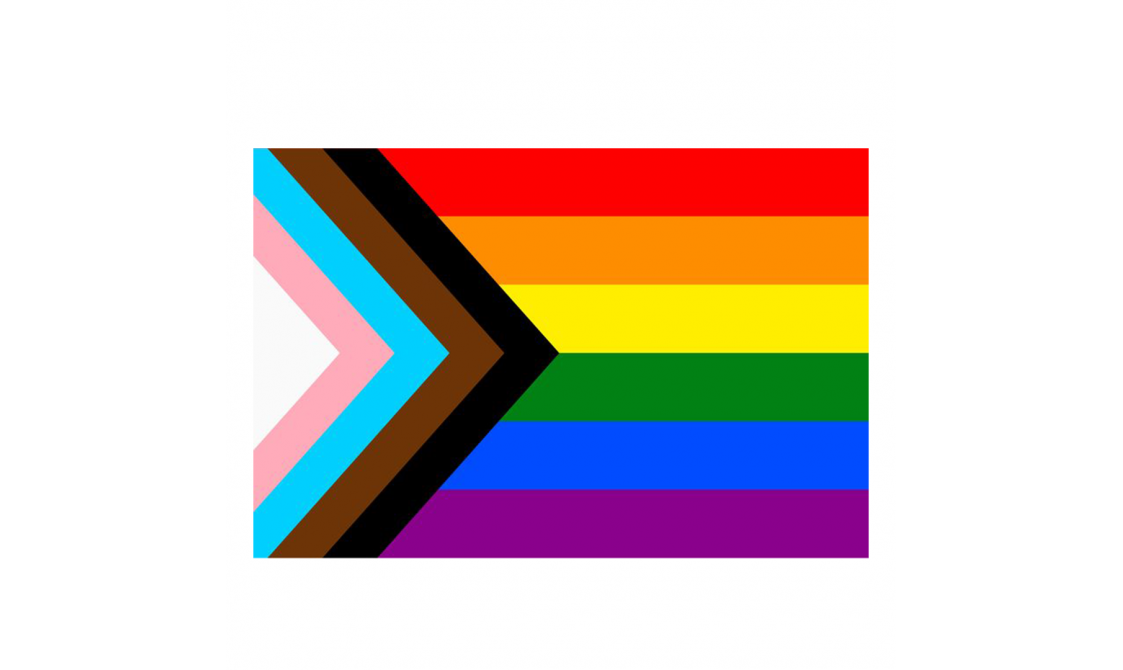
Progress Pride Flag - A year after the debut of the Philadelphia Pride Flag, designer Daniel Quasar introduced a reworked version of the more inclusive flag. A white, pink, light blue, brown and black striped chevron design was added to represent trans people and queer people of colour.

Abrosexual Pride Flag - The Abrosexual Pride Flag has existed since 2015. Abrosexual are people whose sexuality is regularly changing. They could be gay one day, asexual the next, then polysexual after that. The change can last from hours to years. Some may be fluid between all sexualities, while others may only be fluid between a few.

Demisexual Pride Flag - The Demisexual Pride Flag represents part of the asexual community who develop sexual attraction only after forming a deep emotional bond with someone. It’s unknown when the flag was created, but it includes black for asexuality, grey for demisexuality, white for sexuality and purple for community.

Agender Pride Flag - Agender people identify as having no gender or as being gender neutral Created by Salem X in 2014, the agender pride flag has seven horizontal stripes. The black and white stripes represent an absence of gender, the grey represents semi-genderless, and the central green stripe represents nonbinary genders.

Puppy Pride Flag - The Puppy Pride Flag represents members of the Puppy Play community. The design takes inspiration from the Leather Pride Flag, but with the stripes on the diagonal and a red bone in the centre. The central white stripe is large to reflect the community’s diversity, whist the bone speaks for itself!

Two-Spirit Pride Flag - Some Indigenous Americans identify as two-spirit - meaning they fall outside the male-female binary. This can be used to describe a person’s sexual, gender, and/or spiritual identity. The two feathers represent masculine and feminine identities, while the circle symbolises the unification of masculine and feminine identities into a separate gender.

Intersex Inclusive Pride Flag - Intersex activist Valentino Vecchietti designed and unveiled the new rendition of the Pride flag in May 2021. The design incorporates the purple circle and yellow background of the Intersex Flag, designed by Morgan Carpenter, into the Progress Pride Flag. Not only does the redesign make the flag inclusive of intersex people, but it further demonstrates how it is a fluid symbol. Since the original Gilbert Baker design in 1977, the Pride flag has continued to change with the times, and this is merely another step forward for inclusivity.
Artist Guillaume Vandame's flying the flags

As part of the Sculpture in the City, an annual event that transforms urban areas in the City of London into a sculpture park, artist Guillaume Vandame hung 30 pride flags in Leadenhall Market. We asked him about his artwork, what pride flags meant to him, and why they still matter.
Tell us about your installation symbols at Leadenhall Market.
symbols is an artwork consisting of thirty flags ranging from gender, sexuality, and desire. I am really happy that symbols is featured as part of the 10th edition of Sculpture in the City, City of London, pioneered by Stella Ioannou and Simon Glynn.
The nature of the artwork is a sculptural installation that works on different levels. The installation is site specific, made especially for the Beehive Passage at Leadenhall Market, at the same time, it’s conceptual and rootless in the same way gender and sexuality are universal. I feel really proud that the artwork can be presented as part of this incredible programme.
**Due to adverse weather and strong wind, symbols is currently deinstalled from Leadenhall Market while the artwork undergoes maintenance. It will be reinstalled in March 2022.**
What was the inspiration for symbols?
I had the idea when I was developing my artwork Notice Me (LGBTQIA+ Walk) for Nocturnal Creatures 2019, an annual arts festival commissioned by Sculpture in the City in partnership with Whitechapel Gallery. As part of my research, I was amazed to come across a cross-section of flags at Bishopsgate Institute, and instantly felt compelled to bring this out into a more public space. At the same time, I was interested in creating a meeting point for people joining us on the walk, and I had this idea to create artwork that would show as many flags together as possible. Leadenhall Market was part of this walk and it felt poetic that symbols can be shown here for the first time.


When did you first become aware of the Pride flag and what does it mean to you?
I first learned about the Pride flag as a teenager whilst coming to terms with my own sexuality. I have to admit, I felt a bit alienated or estranged from something that was so loud and out there, which was the opposite of how I felt at the time; I didn’t want to draw attention to myself. It was only after coming out that I became more ‘acclimated’ with the flag and now it’s something I firmly stand by and support.
It’s interesting, because I think that feeling is exactly why the Pride flag is so effective as a symbol for human rights and equality. It continues to challenge people to question their own attitudes regarding differences in our society, whilst simultaneously standing as a peaceful symbol of solidarity with the LGBTQIA+ community. It’s a rainbow, after all, what’s not to like?
Why do Pride flags still matter?
While I was working on symbols for Sculpture in the City, the symbolism and legacy of the Pride flag became the focus of A Brief History of Rainbows, an art film I made between 2020 and 2021 as part of my residency at Union Chapel, London. I wanted to re-frame the Pride flag and strip it back, to show that it’s not something we can take for granted, no matter how accepting or tolerant our attitudes might appear.
I just learned a few days ago about Sarah Hegazi, an Egyptian activist who was arrested, imprisoned, and tortured for three months after flying a Pride flag at a concert in 2017. They died by suicide in 2020. The story might be extreme or uncomfortable to hear but it helps put things in perspective. On the one hand it is a ‘rainbow’ and on the other hand it is a ‘flag’, and these are actually two separate things which together become quite irreverent and iconoclastic.
Most people might also be surprised to know that the Pride flag is frequently vandalised, stolen, and was, under President Trump, banned from being shown at US Embassies. The nature of exhibiting symbols then becomes a gesture of solidarity with these individual community groups. It signifies a social responsibility or commitment by an institution to include and represent all these people in public space. I am also aware that one day we might live in a utopian world where our gender, sexuality, and desire are no longer part of this discourse and symbols alludes to this idea as well. The joy of the artwork is how it reveals our values, beliefs, and attitudes as a society while paradoxically being a total celebration of love and togetherness.
Why do you think it’s important for different identities to have a symbol?
I was talking to a friend recently who was thinking about coming out but was unsure if they were ‘bisexual’ or ‘gay’. It was through this chat that I remembered how important it is that each of these flags exist, because they ground our sense of identity. The experience of being gay might be similar to being bisexual, but they are ultimately different lived experiences. Each person is unique, and that also varies among generations and in different cities and countries. The idea of showing the flags in public space is really interesting as a concept, given how polarising they can be in different cultures and contexts.
As an artist, I feel like there is maybe more freedom than simply showing the flags as something ordinary like at a Pride festival. Even in these contexts, some of the flags represent aspects of identity and desire that are further away from the conceived 'mainstream', like those from the fetish communities. symbols acknowledges this tension through the inclusion of eight flags from these communities. This opens a conversation around difference and desire and is something people can learn more about at the UK Leather and Fetish Archive, which celebrates and preserves the heritage of leather, rubber, kink, BDSM and fetish communities. It feels fitting that it has a home alongside the extensive LGBTQ+ Archives housed at Bishopsgate Institute.
To see more of Guillaume's artwork, be sure to head over to his Instagram

If you'd like to learn more about LGBTQ+ history, from 28 February - 21 March, we're taking over The Curve at Barbican with Out and About!. We've created an archive installation of objects, ephemera and media that highlights 40 moments and stories in London’s LGBTQ+ history.
